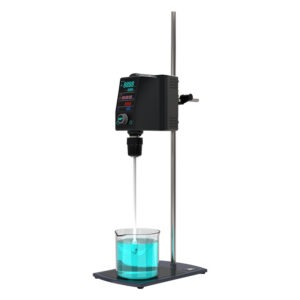
1. Introduction: The Importance of Chemical Analysis Technology
chemical analysis technology, high-throughput analysis, portable analytical devices, integrated analysis platforms, automated analysis, nanotechnology
Chemical analysis technology is an indispensable tool in scientific research, widely used in environmental monitoring, drug development, food safety, and materials science. With continuous technological advancements, chemical analysis techniques are evolving to meet the growing research demands and market challenges. This article explores the current trends in chemical analysis technology, helping researchers grasp future technological directions while anticipating potential improvements in instruments.
2. Latest Development Trends
- High-Throughput Analysis Technology
As sample quantities increase, high-throughput analysis is becoming a prominent trend. This technology allows researchers to analyze multiple samples simultaneously, enhancing experimental efficiency. For example, in drug screening, researchers can test thousands of compounds in a short period, providing a broader data foundation for new drug development. - Portable and On-Site Analysis Equipment
The rise of portable analytical devices has made on-site analysis possible. Researchers can perform immediate analyses in various environments without bringing samples back to the lab. This technology is particularly important for environmental monitoring and food safety testing, making research more flexible and efficient. - Integrated Analysis Platforms
Integrated analysis platforms combine multiple analytical techniques into a single system, streamlining sample processing, analysis, and data management. By using an all-in-one device, researchers can simplify experimental workflows, reducing the number of steps in the laboratory and improving efficiency. - Intelligent and Automated Technologies
Automation and intelligent technologies are transforming traditional chemical analysis methods. By incorporating artificial intelligence (AI) and machine learning (ML) algorithms, instruments can autonomously optimize experimental conditions, perform data analysis, and predict results. This not only increases data accuracy but also minimizes human error.
3. Future Technological Directions
- Big Data and Data Analysis
As the volume of generated data continues to grow, the application of big data analysis techniques is becoming increasingly important. By employing data mining and statistical analysis methods, researchers can extract valuable information from vast datasets, optimizing experimental design and processes. - Applications of Nanotechnology
The application of nanotechnology in chemical analysis is on the rise. The unique properties of nanomaterials make them efficient analytical probes, improving detection sensitivity and selectivity. For instance, nano-sensor-based detection technologies can achieve precise measurements of trace substances, expanding the range of chemical analysis applications. - Multidimensional Analysis Techniques
Multidimensional analysis techniques combine various analytical methods to obtain multiple pieces of information from samples simultaneously. For example, two-dimensional gas chromatography (GC×GC) and mass spectrometry (LC-MS) can provide a more comprehensive characterization of samples, aiding in the understanding of complex compound structures and properties.
4. Improvement Potential for Instruments
Looking ahead, there is still significant potential for improvement in chemical analysis instruments:
- Enhanced Sensitivity and Resolution
By improving instrument design and detector technology, researchers can enhance the sensitivity and resolution of analyses, enabling the detection of lower concentration samples. - Improved Data Management and Visualization
With the increasing amount of data, researchers need more efficient data management tools. Developing smarter data management systems and visualization software will help researchers quickly extract important information from data. - User-Friendly Designs
The operation of chemical analysis instruments is often complex; future designs should focus more on user experience, offering simpler interfaces and automation features to lower the operational threshold.
5. Conclusion
Chemical analysis technology is rapidly advancing, with emerging technologies driving laboratory transformation. High-throughput analysis, portable devices, intelligence, and big data analysis are changing the way researchers work. As technology continues to evolve, future chemical analysis instruments will become more intelligent and efficient, providing robust support for scientific research. Researchers should keep up with these technological trends to maintain a competitive edge and propel scientific advancement.

